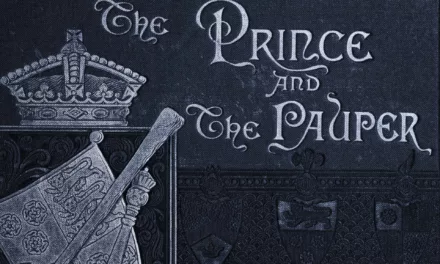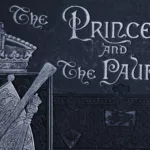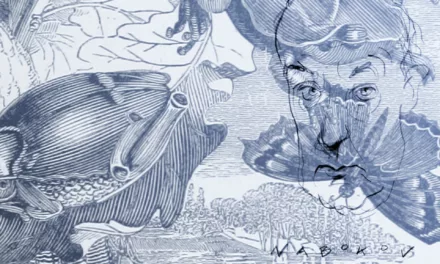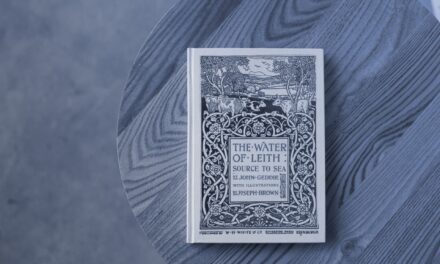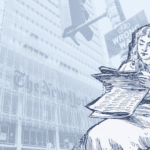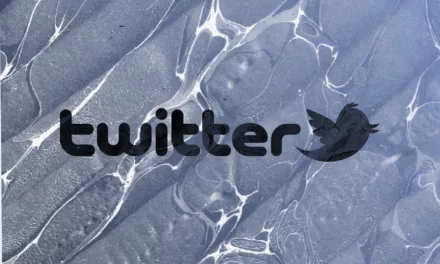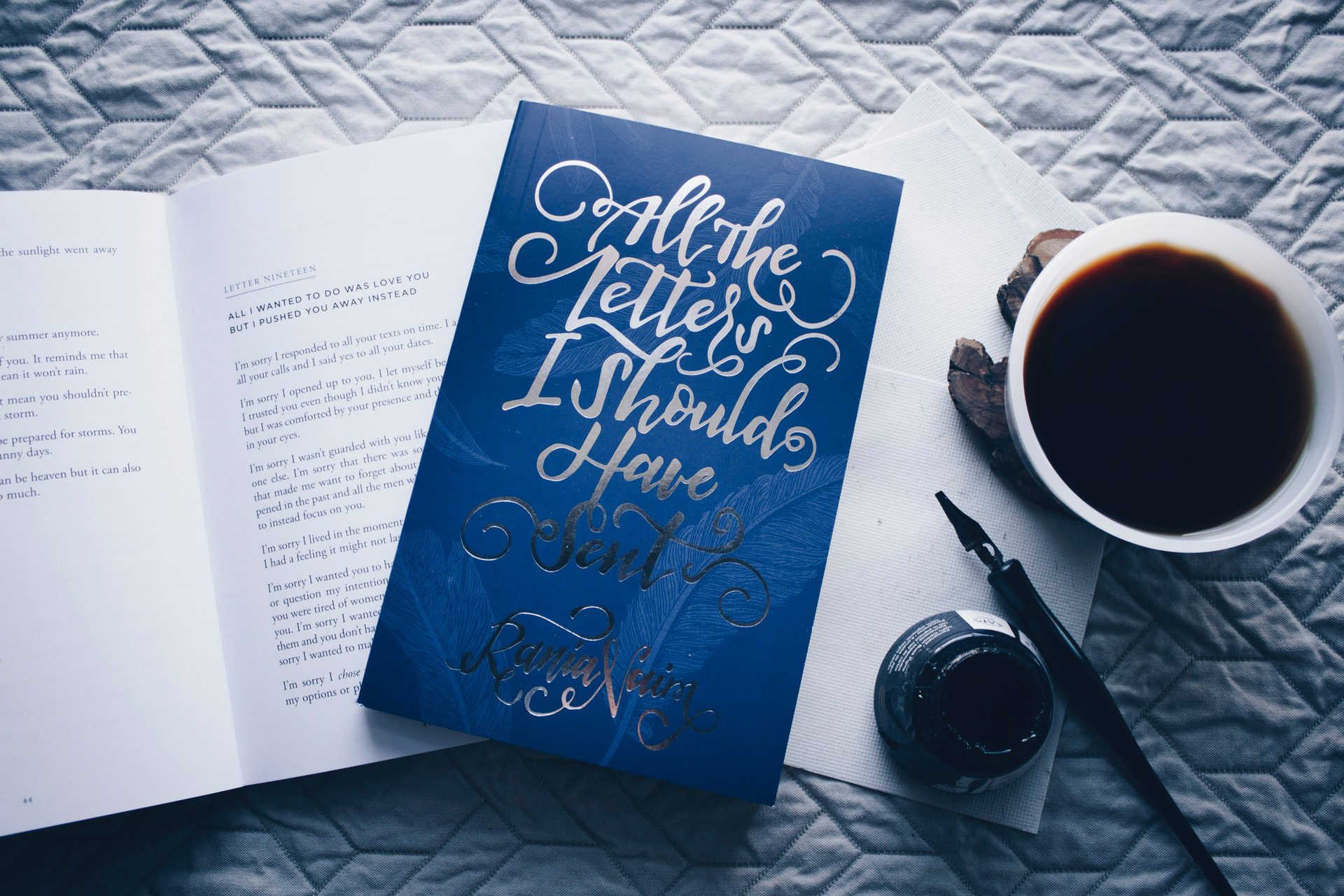
An Introductory Guide to Common Writing and Publishing Terms

If you’ve ever felt like you’re drowning in a sea of unfamiliar jargon while scrolling through social media or chatting with writing industry pros, you’re not alone. The writing and publishing world is chock-full of terminology that can be incredibly overwhelming if you’re not familiar with them.
I’ve put together this guide of common writing and publishing terms to demystify some of the jargon you’ll encounter on your writing journey, whether you’re just dipping your toes into the literary waters or you’re ready to dive in headfirst.
Advance
An advance is a sum of money paid to an author by a publisher before the book is published. This payment is typically given in instalments and is considered an advance against future royalties. The author doesn’t receive additional royalty payments until the book has earned enough to cover the advance. They can vary greatly depending on factors like the author’s track record, the book’s potential market appeal, and the publisher’s budget.
Agent
A literary agent is a professional who represents authors and their written works to publishers, film producers, and other potential buyers. They act as intermediaries, negotiating contracts, managing rights, and advocating for their clients’ interests.
Agents typically have extensive networks within the publishing industry and can provide valuable guidance on market trends and manuscript improvements. While not all authors work with agents, having one can significantly increase the chances of securing a traditional publishing deal and navigating the complex world of trad book publishing.
Alpha reader
An alpha reader is typically someone who reads an early draft of a manuscript, often before it’s even complete. They provide initial feedback on the story’s overall direction, character development, and plot structure.
Alpha readers are usually close friends, family members, or trusted writing peers who can offer honest, constructive criticism. Their role is to help identify major issues or potential improvements early in the writing process, allowing for significant revisions before the manuscript reaches a more polished state.
ARC
ARC stands for Advanced Reader Copy, which is a pre-publication version of a book distributed to reviewers, booksellers, and other industry professionals. These copies are typically uncorrected proofs, meaning they may contain errors or undergo further edits before the final publication.
ARCs serve several purposes: generating early buzz, securing reviews, and allowing booksellers to plan their orders. They’re often provided free of charge and may feature different cover art or formatting than the final published version. Authors and publishers use ARCs as a crucial marketing tool.
Backlist
A backlist refers to a writer’s catalogue of older books that are still in print and available for purchase. These titles, while not recent releases, continue to generate sales and revenue. Backlist books often form a significant portion of a publisher’s income, as they have established readership and require less marketing effort.
For authors, having a strong backlist can provide steady royalties and help build a loyal fan base. Publishers may periodically promote backlist titles through repackaging, special editions, or targeted marketing campaigns to revitalise sales.
Back matter
Back matter refers to the supplementary content found at the end of a book. This typically includes elements like acknowledgements, an author biography, a glossary, a bibliography, etc.
Back matter serves to provide additional information, context, or resources related to the main content. It can enhance the reader’s understanding, offer credibility to the work, and sometimes serve marketing purposes. The specific components included in back matter can vary depending on the book’s genre, target audience, and publisher preferences.
Beta reader
Beta readers are individuals who read and provide feedback on a manuscript after it has undergone initial revisions. Unlike alpha readers, beta readers typically review a more polished draft. They offer insights on various aspects of the story, including pacing, character development, and overall readability.
Beta readers often represent the target audience for the book, providing valuable perspective on how potential readers might receive the work. Their feedback can help authors identify areas for improvement before submitting the manuscript to agents or publishers.
Blurb
A blurb is a short, promotional description of a book, typically found on the back cover or inside flap. It’s designed to entice potential readers by providing a glimpse into the story’s premise, main characters, or central conflict.
Writing an effective blurb is a crucial marketing skill, as it can significantly influence a reader’s decision to purchase or read the book. Authors may write their own blurbs or collaborate with their publisher’s marketing team to create a compelling summary.
BookTok
BookTok is a popular sub-community on TikTok dedicated to book recommendations, reviews, and literary discussions. It has become a powerful force in the publishing industry, capable of catapulting both new releases and backlist titles to bestseller status. Authors and publishers increasingly recognise the platform’s influence, often tailoring marketing strategies to engage with BookTok creators and trends.
Comp titles
Comp titles, short for comparative titles, are books similar to yours in genre, style, or theme. They’re used in query letters and book proposals to help agents and publishers understand where your book fits in the market.
Effective comp titles are usually recent releases (within the last few years) that have achieved some level of success. Choosing appropriate comp titles demonstrates your knowledge of the current market and helps position your book for potential readers.
Copyedit
Copy editing is a crucial step in the publishing process, focusing on the finer details of language, grammar, and style. A copy editor reviews the manuscript for consistency, clarity, and correctness, addressing issues such as spelling errors, punctuation, and sentence structure. They also ensure adherence to the publisher’s style guide and maintain consistency in formatting.
While copy editing doesn’t involve major rewrites, it plays a vital role in polishing the manuscript and enhancing its readability. This process typically occurs after developmental editing but before proofreading.
Critique partner
A critique partner is a fellow writer who exchanges manuscripts with you for mutual feedback. Unlike beta readers, critique partners often have a deeper understanding of the art of writing and can offer more technical advice. They provide detailed critiques on various aspects of your writing, from plot structure to character arcs. This relationship is typically reciprocal, with both writers benefiting from each other’s insights.
Developmental edit
A developmental edit is a comprehensive review of a manuscript that focuses on the big-picture elements of storytelling. This type of editing addresses issues like plot structure, character development, pacing, and overall narrative arc.
Developmental editors work closely with authors to identify strengths and weaknesses in the manuscript, offering suggestions for improvement and helping to shape the story into its best possible form. This process often involves multiple rounds of revisions and can significantly enhance the quality of the final product.
Elevator pitch
An elevator pitch is a concise, compelling summary of your book that can be delivered in the time it takes to ride an elevator (typically 30 seconds to 2 minutes). It’s a great tool for authors when networking or pitching to agents and publishers. A good elevator pitch should capture the essence of your story, highlighting its unique selling points and leaving the listener wanting to know more.
Front matter
Front matter refers to the preliminary pages of a book that appear before the main content. This typically includes the title page, copyright information, a dedication, the table of contents, a foreword, or a preface.
Front matter serves to introduce the book, provide essential information, and set the tone for the reader. The specific elements included can vary depending on the type of book and publisher preferences. Well-organised front matter helps readers navigate the book and understand its context before diving into the main content.
Galley
A galley is an early, unfinished version of a book used for promotional purposes and final proofreading. It’s typically distributed to reviewers, booksellers, and media outlets before the official publication date.
Galleys are often paperback with plain covers and may contain typos or formatting issues that will be corrected in the final version. They play a crucial role in generating early buzz and reviews for a book. The text in galleys is not final and may undergo further changes before publication. While the terms ARC and Galley are often used interchangeably, Galleys are usually less designed and polished than an ARC would be.
Genre fiction
Genre fiction refers to works that adhere to specific conventions and expectations of a particular category, such as romance, mystery, science fiction, or fantasy. These books often follow established formulas and tropes familiar to readers of the genre.
While sometimes criticised for being formulaic, genre fiction can be highly creative within its constraints and often enjoys a dedicated readership.
HB
HB is an abbreviation for hardback, also known as hardcover. This format features a rigid protective cover, typically made of cardboard covered with cloth, leather, or paper.
Hardbacks are often the first edition of a book to be released, priced higher than subsequent paperback versions. They are valued for their durability and perceived prestige. Publishers may choose to release a book in hardback first to gauge market interest before investing in a larger paperback print run.
HEA/HFN
HEA stands for “Happily Ever After,” while HFN means “Happy For Now.” These terms are commonly used in romance fiction to describe the ending of a story.
A HEA implies a definitive, long-term happy ending for the main characters, often including marriage or a lifelong commitment. HFN, on the other hand, suggests a positive resolution but leaves room for future challenges or uncertainties. Both endings are essential elements in romance genres, meeting reader expectations and providing emotional satisfaction at the story’s conclusion.
Hook
A hook is a compelling opening that grabs the reader’s attention and entices them to keep reading. It can be a provocative question, an intriguing statement, or a vivid scene that immediately draws the reader into the narrative.
Effective hooks create curiosity, establish tone, and often hint at the central conflict or theme of the story. They are crucial in today’s competitive literary market, where authors must quickly capture and maintain readers’ interest and are often considered the most important element of any book blurb.
Imprint
An imprint is a subdivision of a publishing house that specialises in a particular genre or type of book. It allows publishers to target specific markets and maintain distinct brand identities within their larger organisation.
Imprints often have their own editorial staff, marketing strategies, and distribution channels. For authors, being published under a specific imprint can affect how their book is positioned in the market and perceived by readers.
KU
KU stands for Kindle Unlimited, Amazon’s subscription-based e-book service. It allows subscribers to access a vast library of e-books for a monthly fee. For authors, participating in KU can provide exposure to a wider audience and potential royalties based on pages read. However, it requires exclusivity to Amazon’s platform.
Lead time
Lead time refers to the period between when a book is completed and when it’s published. This timeframe allows for various essential processes, including editing, cover design, marketing preparation, and distribution planning.
Lead times can vary significantly depending on the publisher and the type of book, ranging from a few months to over a year.
LI
LI typically stands for “Love Interest” in writing circles, particularly in romance and fan fiction communities. It refers to a character who is the object of romantic affection for the protagonist or another main character.
Literary Fiction
Literary fiction is a category of novels and short stories that focus on artistry, complex themes, and stylistic innovation rather than commercial appeal. These works often explore the human condition, societal issues, and philosophical questions in depth. They typically feature well-developed characters, intricate plots, and sophisticated writing techniques.
Literary fiction is often critically acclaimed and may be studied in academic settings. While it may not always achieve the same commercial success as genre fiction, it is valued for its artistic and intellectual contributions to literature.
Line edit
A line edit is a detailed review of a manuscript that focuses on improving the flow, style, and clarity of the writing. This process involves examining the text line by line and addressing issues like sentence structure, word choice, and pacing.
Line editors work to enhance the author’s voice while ensuring consistency and readability. They may suggest rewrites, deletions, or additions to strengthen the overall narrative.
Logline
A logline is a brief, compelling summary of a story, typically used for screenplays but also applicable to novels. It encapsulates the core concept, main character, central conflict, and stakes in a single sentence or short paragraph.
An effective logline should hook potential readers, conveying the essence of the story without revealing too much. It’s a valuable tool for pitching to agents, publishers, or producers, and can also serve as a guiding principle for authors during the writing process.
Manuscript
A manuscript is the original, unpublished version of a written work submitted to publishers or agents for consideration. It typically includes the full text of a book, article, or other literary piece, formatted according to industry standards.
Manuscripts are usually typed or digitally created and may undergo several revisions before reaching their final form. In the publishing industry, the term can refer to both fiction and non-fiction works, and it represents the author’s intellectual property before it becomes a published book.
Mass market paperback
Mass market paperbacks are a popular book format designed for wide distribution and affordability. These compact, inexpensive editions are typically printed on lower-quality paper and sold in various retail outlets, including bookstores, supermarkets, and drugstores. They are often smaller than trade paperbacks, making them more portable and accessible to a broader audience.
Mass market paperbacks are commonly used for genre fiction, bestsellers, and reprints of previously published works. Their low production costs and high-volume sales make them an attractive option for publishers seeking to maximize readership and profits.
MC
MC stands for Main Character, the character in a story around whom the plot revolves. The MC is typically the protagonist, driving the narrative forward and undergoing significant development throughout the story. Many writers will also use the initialisms MMC for Male Main Character and FMC for Female Main Character as well.
MG
MG stands for Middle Grade, a category of children’s literature typically aimed at readers aged 8-12. These books often feature protagonists in the same age range and deal with themes relevant to pre-teens, such as friendship, family, and self-discovery.
MG novels are usually shorter than young adult (YA) books and have less complex plots. They often include elements of adventure, fantasy, or mystery, while avoiding mature themes or content.

Midlist
Midlist refers to books that are neither bestsellers nor commercial failures. These titles often form the backbone of a publisher’s catalogue, providing steady sales and contributing to the overall financial stability of the company.
Midlist authors may have a dedicated readership but haven’t achieved widespread recognition. While not as heavily promoted as bestsellers, midlist books can still be critically acclaimed and financially viable. Publishers often nurture midlist authors, hoping they will eventually break through to become bestsellers or develop a loyal following over time.
NaNoWriMo
NaNoWriMo, short for National Novel Writing Month, is an annual event that challenges participants to write a 50,000-word novel during November. This global initiative encourages aspiring writers to focus on quantity over quality, aiming to complete a first draft in just 30 days and is usually accompanied by the hashtag #NaNoWriMo.
Many offshoots of the event have sprung up over the years like NaPoWriMo (National Poetry Writing Month) and NaPriWriMo (National Pride Writing Month). Despite the moniker “National” in the title, these events are very much global.
Pantser
A pantser is a writer who prefers to create their story without extensive planning, often “writing by the seat of their pants.” This approach contrasts with plotters, who meticulously outline their work before writing. Pantsers typically rely on intuition and allow their stories to develop organically as they write.
PB
PB is an initialism used for Paperback books. Paperback books are a popular and affordable format for publishing, characterised by their flexible paper covers. They are typically lighter and more portable than hardcover editions, making them ideal for casual reading and travel. This format allows publishers to offer books at lower prices, making them more accessible to a wider audience and increasing sales.
Pitch
A pitch is a concise presentation of a book or story idea to potential publishers, agents, or producers. It’s designed to capture the essence of the work and generate interest. A good pitch should include the genre, target audience, main plot points, and what makes the story unique.
Writers often use pitches in query letters, at writing conferences, or during face-to-face meetings. Writing an effective pitch requires distilling the core elements of a story into a compelling and memorable format.
Plantser
A plantser is a writer who combines elements of both pantsing and plotting. This hybrid approach allows for some initial planning while maintaining flexibility during the writing process.
Plantsers typically create a loose outline or establish key plot points before beginning their work, but they remain open to spontaneous ideas and changes as they write.
Plotter
A plotter is a writer who meticulously plans their story before beginning to write. This approach involves creating detailed outlines, character profiles, and plot structures.
Plotters often use tools like story maps, beat sheets, or chapter summaries to organise their ideas. This method can help writers maintain consistency, avoid writer’s block, and streamline the writing process.
PoD
PoD stands for Print on Demand, a publishing model where books are printed individually as orders are received. This approach eliminates the need for large print runs and warehousing, reducing upfront costs and financial risks for publishers and authors.
Pring on Demand technology allows for quick turnaround times and enables books to remain perpetually in print. It’s particularly beneficial for self-published authors, small presses, and niche markets.
PoV
PoV stands for Point of View, which refers to the perspective from which a story is narrated. Common types include first-person (using “I” or “we”), third-person limited (focusing on one character’s thoughts and experiences), and third-person omniscient (an all-knowing narrator). The choice of PoV significantly impacts how readers experience the story, influencing their connection to characters and understanding of events.
Proposal
A proposal is a document prepared by an author or agent to pitch a book idea to publishers. It typically includes a synopsis, sample chapters, author biography, market analysis, and comparative titles. For non-fiction works, proposals often serve as the basis for securing a publishing contract before the entire manuscript is written.
A well-written proposal demonstrates the author’s expertise, the book’s potential audience, and its unique selling points. Publishers use proposals to assess the commercial viability and marketability of a project before committing to its publication.
Proof
A proof or uncorrected proof is an early version of a book sent to reviewers, booksellers, and media outlets before final publication. These copies often contain typos, formatting issues, and other errors that will be corrected in the final version.
Proofs are used to generate early reviews and buzz for upcoming releases. They are typically marked with “Not for Sale” and may have different cover art or binding than the final product. Publishers use proofs to gauge initial reactions and make last-minute adjustments before the book’s official release.
Proofreading
Proofreading is the final stage of the editing process, focusing on correcting surface errors like spelling, grammar, punctuation, and formatting. This critical step ensures the manuscript is polished and error-free before publication. They also check for proper layout, page numbers, and other visual elements.
Proofreading takes its name from uncorrected proofs, as these proof versions are the ones that proofreaders will typically work from.
Query letter
A query letter is a brief, persuasive letter sent by an author to literary agents or publishers to pitch their manuscript. It typically includes a hook to capture attention, a brief synopsis of the work, relevant author credentials, and a polite closing. The goal is to entice the recipient to request the full manuscript.
A well-written query letter should be concise, professional, and tailored to the specific agent or publisher. It’s often the first impression an author makes in the publishing industry.
Royalties
Royalties are payments made to authors based on the sales of their books. They are typically calculated as a percentage of the book’s retail price or the publisher’s net receipts. Royalty rates can vary depending on factors like the author’s reputation, the book’s format, and the sales volume.
Authors may receive an advance against future royalties, which must be earned out before additional royalty payments are made. Some contracts include escalating royalty rates that increase as sales milestones are reached, incentivizing authors to promote their work.
Slush pile
The slush pile refers to the large collection of unsolicited manuscripts and query letters received by literary agents and publishers. These submissions are typically reviewed by junior staff or interns, who sift through them to find promising works. The term “slush” implies the often overwhelming and unorganised nature of these submissions.
Spice
Spice is a term most often used in romance and erotic literature to describe the level of sexual content in a book. It ranges from “sweet” (no explicit content) to “extra spicy” (highly explicit). This system helps readers choose books that match their comfort levels.
Authors and publishers use spice ratings to market their works effectively and set reader expectations. The concept of spice has gained popularity with the rise of social media platforms like TikTok, where readers discuss and recommend books based on their spice levels.
Submissions
Submissions refer to the process of authors sending their work to literary agents, publishers, or contests for consideration. This can include query letters, synopses, sample chapters, or full manuscripts, depending on the recipient’s guidelines.
Many publishers and agents have specific submission periods or requirements, and authors must carefully follow these instructions to increase their chances of success. The submission process can be competitive and often requires patience and persistence.
Synopsis
A synopsis is a concise summary of a book’s plot, characters, and themes. It typically ranges from one to three pages and provides an overview of the entire story, including the ending.
Synopses are used by literary agents and publishers to quickly assess a manuscript’s potential. They should capture the essence of the work, highlighting key plot points and character arcs. Writing an effective synopsis requires the ability to distil complex narratives into their core elements while maintaining the story’s unique voice and appeal.
Trope
A trope is a recurring literary device or motif found in creative works. In storytelling, tropes are familiar patterns or conventions that readers recognise and expect. Common tropes include “enemies to lovers” in romance, “chosen one” in fantasy, and “unreliable narrator” in mystery. Authors often subvert or reimagine tropes to create fresh, innovative stories that play with reader expectations.
Unbound manuscript
An unbound manuscript refers to a printed copy of a book that has not yet been bound into its final form. These loose pages are often used for review purposes, allowing editors and proofreaders to easily mark changes or corrections.
Unbound manuscripts may also be sent to early reviewers or used for promotional purposes. They typically include the complete text of the book, along with any illustrations or images (or placeholders to show where they will be), but lack the final cover and binding. This format allows for last-minute adjustments before the book goes to press.
Unsolicited manuscript
An unsolicited manuscript is a book submission sent to a publisher or literary agent without prior request or invitation. These submissions often end up in the slush pile, competing for attention with other works. Many publishers and agents have specific guidelines for unsolicited manuscripts, including preferred genres and submission formats.
While the chances of success are generally lower for unsolicited submissions, some authors have found success through this route. However, most industry professionals recommend seeking representation through a literary agent to increase the likelihood of publication.
Vanity press
A vanity press is a publishing company that charges authors to publish their books, rather than paying authors for their work. These companies often offer packages that include editing, design, and printing services, but the author bears the cost.
While vanity presses can provide a useful service for some writers, they are generally not recommended outside of those use cases. Authors who use vanity presses typically have limited distribution and marketing support, and may struggle to recoup their investment.
Voice
Voice in literature refers to the unique style and perspective of an author or narrator. It encompasses the tone, language, and personality that come through in the writing. A strong, distinctive voice can make a story more engaging and memorable. Voice can be influenced by factors like the author’s background, experiences, and cultural context.
WiP
WiP stands for “Work in Progress,” a term commonly used by authors to describe a manuscript or project that is still in development. Writers often share updates on their WiPs with their audience or writing community, discussing challenges and milestones. This practice can help build anticipation for upcoming works and provide motivation for the author.
WiPs may undergo significant changes before reaching their final form, and authors may seek feedback on portions of their WiP from beta readers or critique partners.
WriterTok
WriterTok is a popular hashtag and community on TikTok dedicated to writers and aspiring authors. This vibrant online space allows writers to share writing tips, book recommendations, and snippets of their work. WriterTok has become a powerful platform for networking, marketing, and finding inspiration within the writing community. Many authors have found success by leveraging WriterTok to build their audience and promote their books.
YA
YA stands for Young Adult, a category of literature primarily targeted at readers aged 12-18. This genre often explores themes of identity, coming-of-age, and social issues relevant to teenagers. YA books typically feature protagonists in their teens or early twenties, dealing with challenges and experiences relatable to young readers. The genre has gained significant popularity in recent years, attracting readers of all ages and spawning several successful film and television adaptations. YA literature covers a wide range of subgenres, including contemporary, fantasy, science fiction, and romance.
Understanding these common writing and publishing terms will help you navigate the writing and publishing world with greater confidence. As you continue your writing journey, you’ll likely encounter even more specialised terminology. Don’t be afraid to ask


